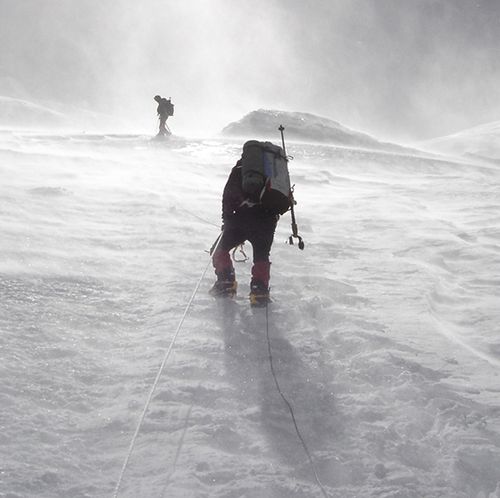
Young Hoon Oh, South Korean PhD candidate in anthropology at UC Riverside, is headed to Nepal at the end of the month to attempt his second Everest summit. But his itinerary extends well beyond the days he'll try to reach the top of the world. He'll then spend a year and a half living with Sherpa families in order to research his dissertation. His goal is to document how��mountaineering has transformed Sherpa society over the nearly 100 years during which Western climbing guides have employed Sherpa people as porters.
Without this assistance, many hundreds of climbers from all over the world could not have ascended Everest and other Himalayan peaks. But the benefits that mountaineering has bestowed on Sherpa culture aren't always as clear, says Oh. Yes, Himalayan mountaineering and trekking have brought a thriving tourism and guiding industry to the region. But that has come at a price.
For one thing, the wealth generated by the guiding and tourism industry has not been evenly distributed.��“In the��Khumbu��area, the gap between rich and poor is growing,” says Oh.
While the older generation of Sherpa people do regard mountaineering as an economic driver, they also consider the mountains to be their spiritual home. They view Everest as the residence of the goddess Miyolangsangma,��says Oh.��Even Sherpa people who've really embraced mountaineering, such as Apa Sherpa, who holds the record for Everest summits, can be regarded as a “conservative” Sherpa since he clearly considers Everest as a place of spiritual significance. ��That's not as true for younger Sherpas, he says.
“The generational gap is about the issue of, abstractly speaking, their view of the nature.” Sherpas in their 20s and 30s are more likely to view the mountains as assets — vehicles for money, education, or societal development. There are a��few female Sherpa mountaineering guides today, which is something that was unthinkable until around the mid-90s, he adds.
Another important transition is that more and more Sherpa climbers are seeking careers not as porters but as professional climbers. , for example, was the first Nepali to scale all 14 peaks in the world above 8,000 meters.��
To conduct his research, Oh will actually be living with some of Mingma Sherpa's family members, in the village��Narbuchaur, Arun Valley. ��You can follow his Everest expedition (he's leading a small team with two other South Korean climbers) and his research efforts on his blog, .��
–Mary Catherine O'Connor
��